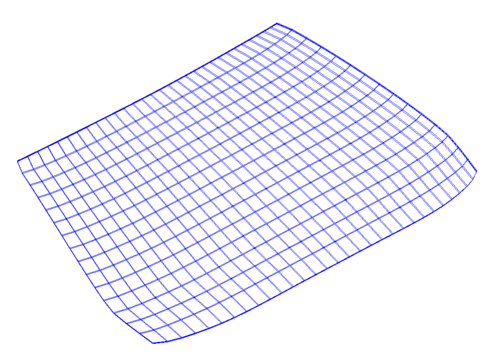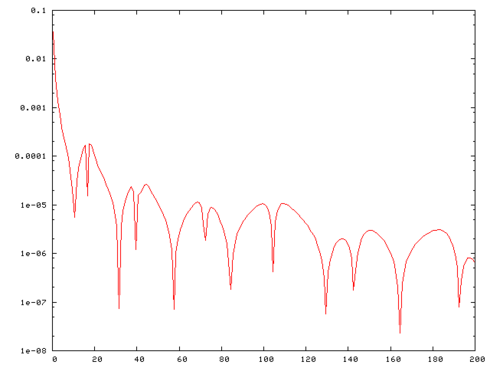m (→References) |
|||
| Line 93: | Line 93: | ||
<ref name="korvink2005"> J.G. Korvink, E.B. Rudnyi, <span class="plainlinks">[https://doi.org/10.1007/3-540-27909-1_11 Oberwolfach Benchmark Collection]</span>, In: Dimension Reduction of Large-Scale Systems, Lecture Notes in Computational Science and Engineering, vol 45: 311--315, 2005.</ref> |
<ref name="korvink2005"> J.G. Korvink, E.B. Rudnyi, <span class="plainlinks">[https://doi.org/10.1007/3-540-27909-1_11 Oberwolfach Benchmark Collection]</span>, In: Dimension Reduction of Large-Scale Systems, Lecture Notes in Computational Science and Engineering, vol 45: 311--315, 2005.</ref> |
||
| − | <ref name="meerbergen2007"> K. Meerbergen, <span class="plainlinks">[https://doi.org/10.1002/nme.2058 ]</span>, International Journal for Numerical Methods in Engineering, '''73'''(1): 96--106, 2007.</ref> |
+ | <ref name="meerbergen2007"> K. Meerbergen, <span class="plainlinks">[https://doi.org/10.1002/nme.2058 Fast frequency response computation for Rayleigh damping]</span>, International Journal for Numerical Methods in Engineering, '''73'''(1): 96--106, 2007.</ref> |
</references> |
</references> |
||
Revision as of 12:25, 1 April 2018
 Note: This page has not been verified by our editors.
Note: This page has not been verified by our editors.
Description
This is an example for a model in the frequency domain of the form
where  represents a unit point load in one unknown of the state vector.
represents a unit point load in one unknown of the state vector.
 is a symmetric positive-definite matrix and
is a symmetric positive-definite matrix and  where
where  is symmetric positive semi-definite.
is symmetric positive semi-definite.
The test problem is a structural model of a car windscreen.
This is a 3D problem discretized with  nodes and
nodes and  linear hexahedral elements (3 layers of
linear hexahedral elements (3 layers of  elements).
The mesh is shown in xx--CrossReference--dft--fig1--xx.
The material is glass with the following properties:
The Young modulus is
elements).
The mesh is shown in xx--CrossReference--dft--fig1--xx.
The material is glass with the following properties:
The Young modulus is  , the density is
, the density is  , and the Poisson ratio is
, and the Poisson ratio is  . The natural damping is
. The natural damping is  , i.e.
, i.e.  .
The structural boundaries are free (free-free boundary conditions).
The windscreen is subjected to a point force applied on a corner.
The goal of the model reduction is the fast evaluation of
.
The structural boundaries are free (free-free boundary conditions).
The windscreen is subjected to a point force applied on a corner.
The goal of the model reduction is the fast evaluation of  . [1]
Model reduction is used as a fast linear solver for a sequence of parametrized linear systems.
. [1]
Model reduction is used as a fast linear solver for a sequence of parametrized linear systems.
The discretized problem has dimension  .
The goal is to estimate
.
The goal is to estimate  for
for ![\omega\in[0.5,200]](/morwiki/images/math/b/b/0/bb02974887d08c7449464802fbf5ea4c.png) .
In order to generate the plots the frequency range was discretized as
.
In order to generate the plots the frequency range was discretized as  with
with  .
.
xx--CrossReference--dft--fig1--xx shows the mesh of the car windscreen and xx--CrossReference--dft--fig2--xx the frequency response  .
.
Origin
This benchmark is part of the Oberwolfach Benchmark Collection[2]; No. 38886.
Data
Download matrices in the Matrix Market format:
- windscreen.tar.gz (21.5 MB)
The archive contains files windscreen.K, windscreen.M and windscreen.B representing  ,
,  and
and  accordingly.
accordingly.
Dimensions
System structure:
with ![\omega \in [0.5, 200]](/morwiki/images/math/b/b/0/bb02974887d08c7449464802fbf5ea4c.png) .
.
System dimensions:
 ,
,
 ,
,
 .
.
Citation
To cite this benchmark, use the following references:
- For the benchmark itself and its data:
- Oberwolfach Benchmark Collection Windscreen. hosted at MORwiki - Model Order Reduction Wiki, 2004. http://modelreduction.org/index.php/Windscreen
@MISC{morwiki_windscreen,
author = {Oberwolfach Benchmark Collection},
title = {Windscreen},
howpublished = {hosted at {MORwiki} -- Model Order Reduction Wiki},
url = {http://modelreduction.org/index.php/Windscreen},
year = 2004
}
References
- ↑ K. Meerbergen, Fast frequency response computation for Rayleigh damping, International Journal for Numerical Methods in Engineering, 73(1): 96--106, 2007.
- ↑ J.G. Korvink, E.B. Rudnyi, Oberwolfach Benchmark Collection, In: Dimension Reduction of Large-Scale Systems, Lecture Notes in Computational Science and Engineering, vol 45: 311--315, 2005.




